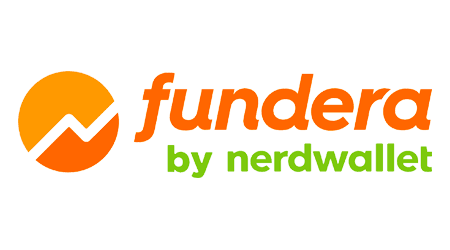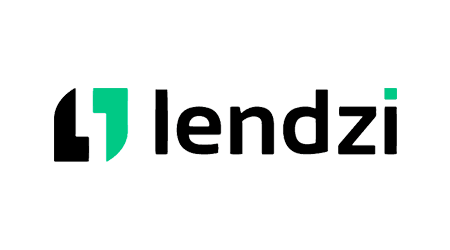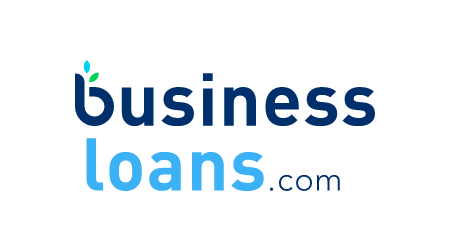Interest rates are one of the most important factors when comparing the cost of business loans. As of April 1st, banks are charging their best credit borrowers an average of 8.50% APR on term loans. But other types of business loans – like short-term working capital loans – can have APRs up to 150% or more. So, it’s hard to know if you’re getting a good rate if you’re not familiar with the different types of loans, what they’re for and what rates to expect.
To help you, we break down the average rates for each type of business loan and explain how you can get the best deal possible.
Average business loan interest rates
When it comes to business loan interest rates, there’s no one size fits all. Rates can go from as low as 7.50% APR for a traditional bank term loan from a lender like Bank of America to as high as 150% APR or more for a quick turnaround working capital loan from an online lender.
In fact, the range of rates available for small business loans varies so much that it makes more sense to break down the rates by the type of business loan. Of course, other factors affect your rate, like your credit score, revenue and time in business — and whether you’re providing collateral.
When evaluating different business loans, always compare APRs, not interest rates, to calculate how much your loan will cost. The APR percentage includes both the loan’s interest rate and any applicable fees, so it shows the total cost of borrowing better than just the interest rate.
Current business loan rates by loan type
Since some business loans come with fees rather than interest, let’s take a look at how APRs compare for several loan types:
| Type of loan | Interest rate |
|---|---|
| Bank term loan | 7.71% to 8.98% |
| Online business loan | 9% to 75% |
| Business line of credit | 8% to 60+% |
| SBA loans |
|
| Merchant cash advance | 25% to 250+% |
| Invoice factoring | 13% to 60% |
In general, bank term loans have the most competitive rates, especially for existing customers, while short-term working capital loans from online lenders tend to have the highest rates.
How are SBA rates different?
While the Small Business Administration (SBA) establishes the maximum interest rates that lenders can charge for SBA loan programs, these rates are largely based on the Prime Rate or US Treasury security rates and the underwriting guidelines of the lender, and they come with rate limits.
For SBA 7(a) loans:
| Loan amount | Maximum rate |
|---|---|
$50,000 | Prime rate + 6.5% |
$50,001 – $250,000 | Prime rate + 6% |
$250,001 – $350,000 | Prime rate + 4.5% |
$350,001+ | Prime rate + 3% |
SBA 7(a) loans can have either fixed or variable interest rates.
SBA 504 loans have fixed interest rates that are pegged to yields on 10-year US Treasury securities, plus a margin. Rates for SBA Microloans and Community Advantage loans are also subject to SBA maximums, but vary depending on the lender.
What is a business loan interest rate?
A business loan interest rate is the cost of borrowing, expressed as a percentage of the loan amount that your lender charges regularly. There are two types of interest rates: Fixed or variable. There are also two types of interest calculations: Simple or compound.
Here’s a rundown of the differences, plus an explanation of how a business loan’s interest rate differs from the annual percentage rate (APR).
Fixed vs. variable interest
Fixed interest is an interest rate that stays the same while you pay back your loan. It’s less risky than a variable rate, because it doesn’t fluctuate and makes repayments more predictable. On the other hand, variable rates are subject to change, usually every month or quarter.
Variable rates are made up of two parts: A fixed interest rate called a benchmark rate or index, plus a margin rate, which is based on your creditworthiness and other factors. The LIBOR rate and Wall Street Journal prime rate are two of the most common types of benchmark rates — which represent the lowest interest rates that lenders are charging borrowers.
However, while less common, there are hybrid business loans that offer a mix of fixed and variable rates throughout your loan term.
Simple vs. compound interest
Simple interest is calculated on your loan’s principal amount only — it doesn’t include compounding interest. You can calculate how much you’d pay on a simple interest loan with this formula:
Principal x interest rate x loan term (in years) = Simple interest
Compound interest takes a little more number crunching to calculate. It’s when lenders charge interest not just on your loan principal but also on any unpaid interest that has accumulated since your last payment. This makes it more expensive than simple interest.
Some lenders compound interest on an annual, monthly, weekly or even daily basis. The more often your loan compounds, the more you’ll end up paying in interest.
Interest rate vs. annual percentage rate (APR)
Unlike an interest rate, the APR includes both the interest and fees of a given loan, as a percentage, that applies to your loan per year. Lenders often advertise a loan’s APR, instead of its interest rate. That’s because it’s a more accurate picture of how much your loan will cost.
When comparing APRs, make sure you’re also comparing loans with similar terms and amounts. A loan with a 100% APR and six-month term might actually cost less in the long run than a large loan with a 15% interest rate and a five-year term.
Factors that affect your business loan interest rate
Here’s a list of the main factors that affect your business loan interest rate:
- Loan type. Hands down, the type of business loan you choose has the greatest impact on rates. Term loans from traditional banks tend to have the lowest rates, while short-term loans, like merchant cash advances, typically have the highest rates.
- Lender type. Traditional banks and credit unions tend to have the lowest rates on business loans, while alternative online lenders charge some of the highest rates — but online lenders often have more relaxed eligibility, no-doc loan options and are faster to fund.
- Creditworthiness. Most lenders look at your personal credit score before extending a loan, so having a score of 700 or above will get you the best rates. There are loans for people with lower credit scores, but often at significantly higher rates.
- Healthy cash flow. A strong cash flow signals that your business is less risky. Having at least $100,000 a year in revenue can help you qualify for business loans that have lower rates, for example, bank term loans. However, If you’re in the works of starting a business, you still may have options with lenders or loans geared toward startups.
- Collateral. Offering valuable assets, like real estate or equipment, as collateral lowers the lender’s risk and can help you snag a better rate and better terms. For example, some equipment loans come with 100% financing due to the reduced risk.
- Type of business and industry. Since lenders prefer to work with businesses in industries that have greater potential for growth and profitability, being in a preferred industry can help you secure a more competitive rate.
- Market conditions. Economic factors, such as Federal Funds rates and the overall state of the economy, strongly influence the interest rates available for business loans.
Tips for getting the lowest small business loan rate
Here are 6 tips to follow to get the lowest rate possible on your loan:
- Choose a shorter loan term. A shorter loan term means there’s less time for interest to add up, reducing your overall cost of borrowing — but your monthly payment will likely be higher than with a longer term.
- Shop around for the best rate. Different lenders use different criteria when determining your loan amount, rates and terms. Prequalifying with multiple lenders can help you find the best deal possible.
- Negotiate with the lender. If you have an existing relationship with a lender or you can show them more competitive quotes from another lender, they may be willing to lower your interest rate.
- Provide collateral. Backing your loan with business assets, like real estate or equipment, in addition to a personal guarantee, offsets the risk to the lender and could snag you a better rate.
- Improve your credit. Because the lowest rates typically go to the best credit borrowers, improving your personal credit score before you apply can lead to more competitive offers.
- Pay down your other debts. Having a lower amount of overall debt and a longer history of on-time repayments can also help reduce costs.
Business loan fees
While rates are an easy way to compare, they’re not the whole picture. In addition to a loan’s APR, these fees may also apply to certain loans.
| Fee | Typical range | When it applies |
|---|---|---|
Origination fee | 1% to 10% of the loan amount | Not all lenders charge an origination fee, but if it applies, it will be deducted from your funds before you receive them. |
Referral fee | Varies | Some business loan connection services charge a referral fee if you get funded by a lender through their service. |
SBA guarantee fee | 0.25% to 3.75% of the guaranteed portion of the loan | This fee is either added to your SBA loan amount or deducted from your funds before you receive them. Some borrowers may qualify for a waived SBA guarantee fee. |
Late fee | Either between $10 to $35 or 2% to 5% of your loan amount | A fee charged if you miss a payment. Many lenders have a grace period of around 15 days before the late fee applies. |
Nonsufficient funds fee | $15 to $35 | A fee charged if your bank account doesn’t have enough funds to cover your loan payment. |
Withdrawal fee | $1 to $4 per withdrawal | A cost for using your credit or debit card, if your loan is issued using a card — especially if you’re withdrawing from another bank’s ATM. |
Prepayment penalty | Varies | Some SBA loans and commercial real estate loans have prepayment penalties if you pay the loan off within a certain timeframe. |
Wire transfer fee | $15 to $35 | Covers the extra cost of sending a payment via wire transfer. |
Low-interest isn’t the only important feature of a business loan
You may think a low interest rate is the most important feature when comparing business loans. However, according to Finder’s Consumer Confidence Index, most respondents agreed that low fees was the top consideration when shopping for a business loan, at nearly 60%. Runner up for most important feature of a business loan was fast funding speed at nearly 50%, followed by low interest rates at 45%.
*This question was answered by a small sample of self-employed people who’ve taken out or are thinking about taking out a small business loan.
A low interest rate is an important consideration while loan shopping. However, factors like fees should weigh heavy in your consideration since they greatly increase the cost that you’ll pay for the loan overall. As mentioned, the APR includes the loan’s interest rate and applicable fees, which gives you a more clear picture of borrowing costs compared to the interest rate alone.
Bottom line
Because there are so many flavors of business loans, there’s no such thing as an average business interest rate. But knowing the general range of rates you can expect on a specific type of loan or from a specific lender can help you find the best small business loan for your situation.
Frequently asked questions
What types of business lenders have the highest approval rates?
According to data compiled by Statista, alternative online lenders had the highest business loan approval rates in 2023, which accepted over 28% of applications in the US. Big banks had the lowest approval rates.
What is the prime rate and how do lenders use it?
The prime rate is based on the federal funds rate, which is the rate banks use to lend to other banks. The better your credit and the more established your business is, the more likely you’ll be offered interest closer to the prime rate.
What is the average term for a small business loan?
It depends on the type of loan you’re applying for. Term loans typically range from one to 10 years, while SBA loans come with terms from five to 25 years. And short-term loans can come with terms from three to 24 months.
How much are commercial loan interest rates?
Commercial loan interest rates vary depending on the loan type and lender. Right now, bank commercial loans typically have rates between 7% and 12%, while commercial real estate loans may have rates between 5.25% and 10%, depending on the collateral.
Ask a question
More guides on Finder
-
Best Warehousing and Storage Financing in Florida in 2025
Compare some of the top lenders offering loans in Florida to warehousing and storage businesses and the pros and cons.
-
7 Best Startup Business Lines of Credit in 2025
Compare business lines of credit, the requirements needed to qualify and other types of business financing.
-
Compare No-Doc Business Lines of Credit for 2025
Lenders that offer no-doc business lines of credit streamline the lending process.
-
Small Business Loans in Texas
Where to get a business loan in Texas and how to qualify.
-
$10 million business loans
Buy real estate, another business or expand your enterprise.
-
How to get a $3 million business loan
You’ll have an easier time qualifying if you have strong credit and high revenue.
-
PayPal Working Capital Business Loans Review
Get financing for your e-business for a flat fee instead of interest, only if you have a PayPal account with consistent sales. No credit check required.
-
Bluevine Business Line of Credit Review
Open a line of credit or sign up for invoice factoring with options for bad credit and startups.
-
Small business loans for women
Learn about financing options including SBA loans, private grants and local programs.
-
Best Small Business Lines of Credit
Compare some of the top lenders offering business lines of credit and the pros and cons of each one.




